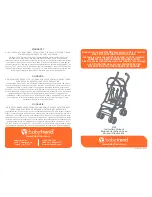
CAN-Engine
Chapter 3: Hardware
3-9
use, the lithium battery should last about 3-5 years without external power being supplied. When the
external power is on, the battery-switch-over circuit will select the VCC to connect to the VRAM.
3.5.2
EEPROM
A serial EEPROM of 512 bytes (24C04), or optional 2K bytes (24C16) can be installed in U7. The CAN-
Engine uses the P12=SCL (serial clock) and P11=SDA (serial data) to interface with the EEPROM. The
EEPROM can be used to store important data such as a node address, calibration coefficients, and
configuration codes. It typically has 1,000,000 erase/write cycles. The data retention is more than 40 years.
EEPROM can be read and written by simply calling the functions ee_rd() and ee_wr().
A range of lower addresses in the EEPROM is reserved for TERN use. Details regarding which addresses
are reserved, and for what purpose, can be found in Appendix E of this manual.
3.5.3
AD7655, 16-bit parallel high speed ADC
The unique 16-bit parallel ADC (AD7655, 0-5V) supports ultra high-speed (1 MHz conversion rate) analog
signal acquisition. The AD7655 contains two low noise, high bandwidth track-and-hold amplifiers that
allow simultaneous sampling on two channels. Each track-and hold amplifier has a multiplexer in front to
provide a total of 4 channels analog inputs. The parallel ADC achieves very high throughput by requiring
only two CPU I/O operations (one start, one read) to complete a 16-bit ADC reading. With a precision
external 2.5V reference, the ADC accepts 0-5V analog inputs at 16-bit resolution of 0-65,535.
See sample program \tern\186\samples\ee\ee_ad.c for details on reading the ADC. The sample program is
also included in the pre-built sample project; \tern\186\samples\ee\ee.ide.
Refer to the data sheet for additional specifications; \tern_docs\parts\ad7655.pdf.
3.5.4
CAN
The CAN-Engine supports an on-board Controller Area Network (CAN) controller(SJA1000, Philips). It
supports network baud rates up to 1M-bit per second. Software drivers allow access to all CAN controller
registers, as well as a buffering software layer.
The CAN bus is a balanced (differential) 2-wire interface running over either a Shielded Twisted Pair
(STP), Un-shielded Twisted Pair (UTP), or Ribbon cable.
CAN Bus Electrical Interface Circuit
















































